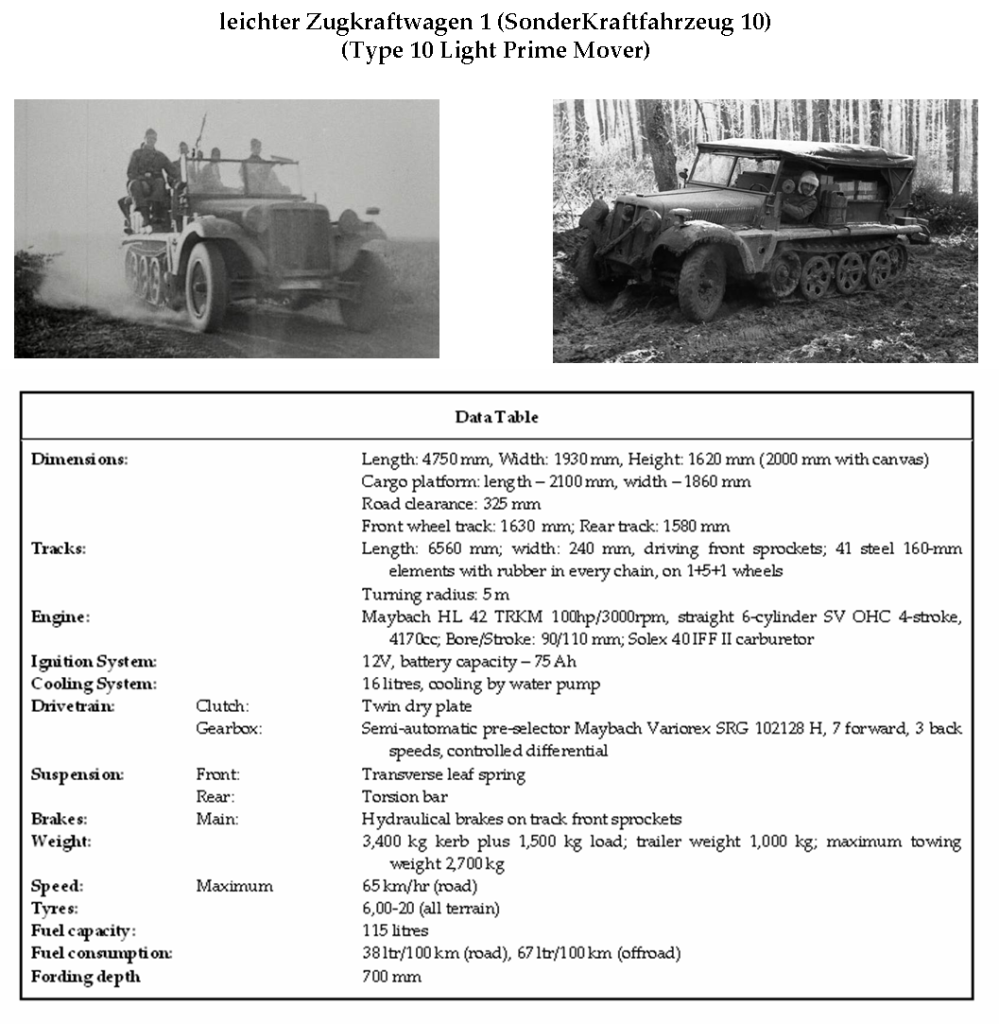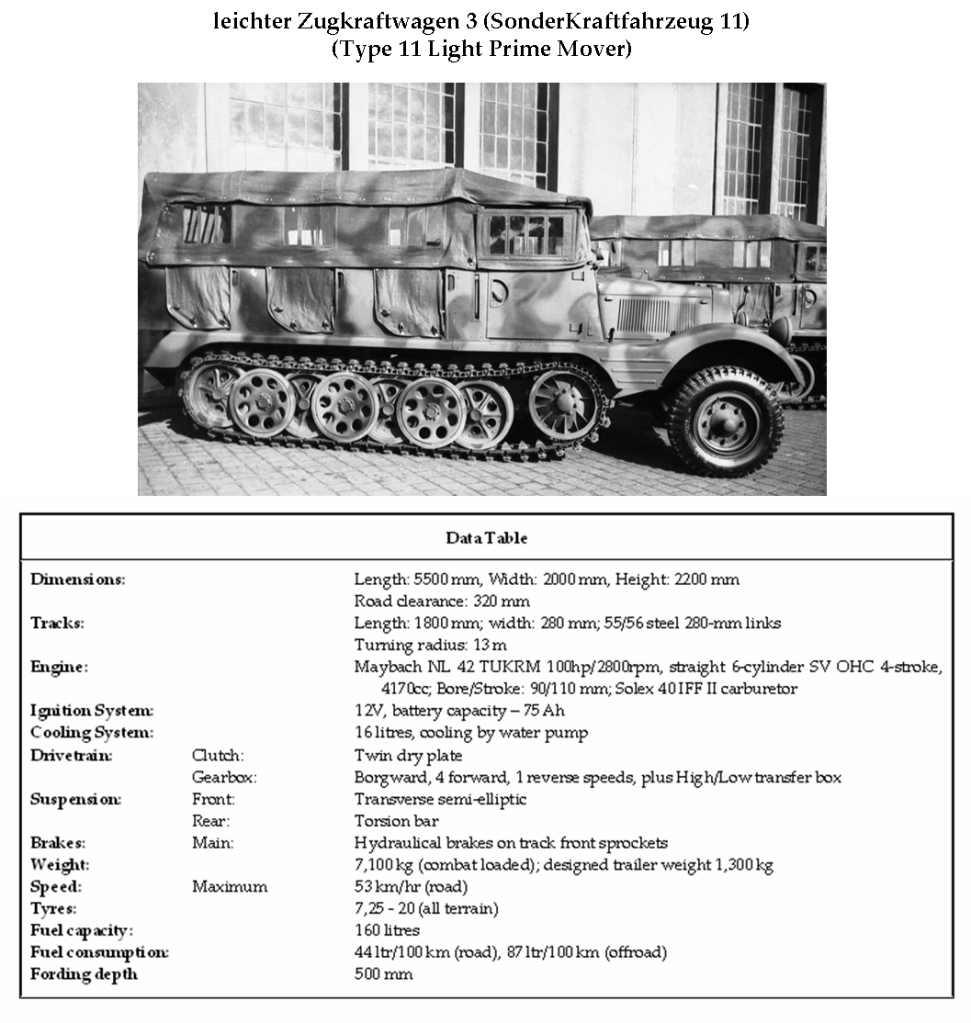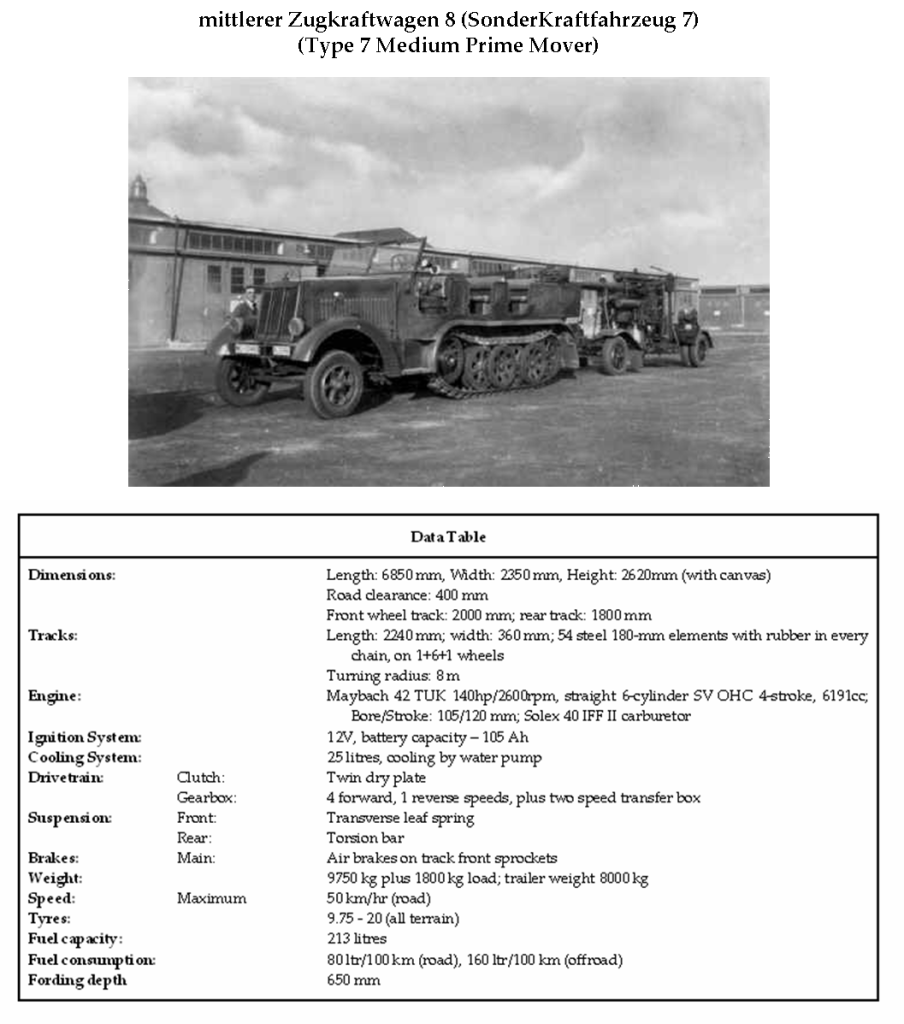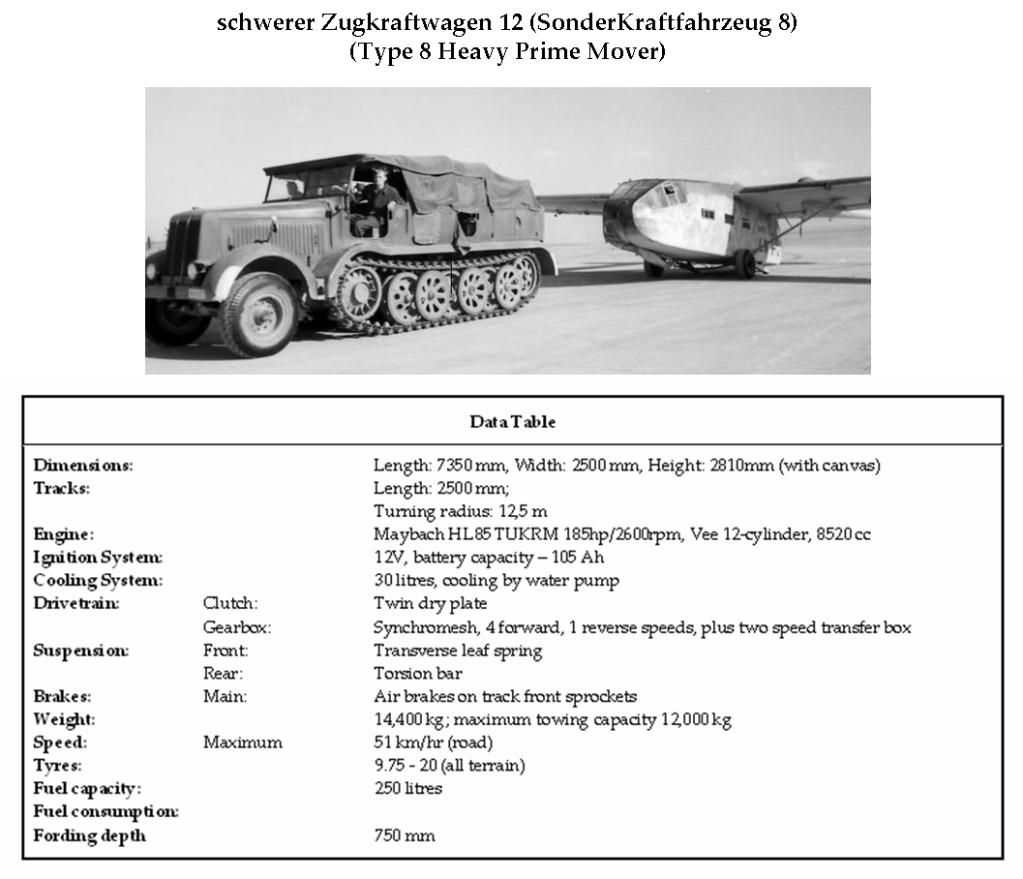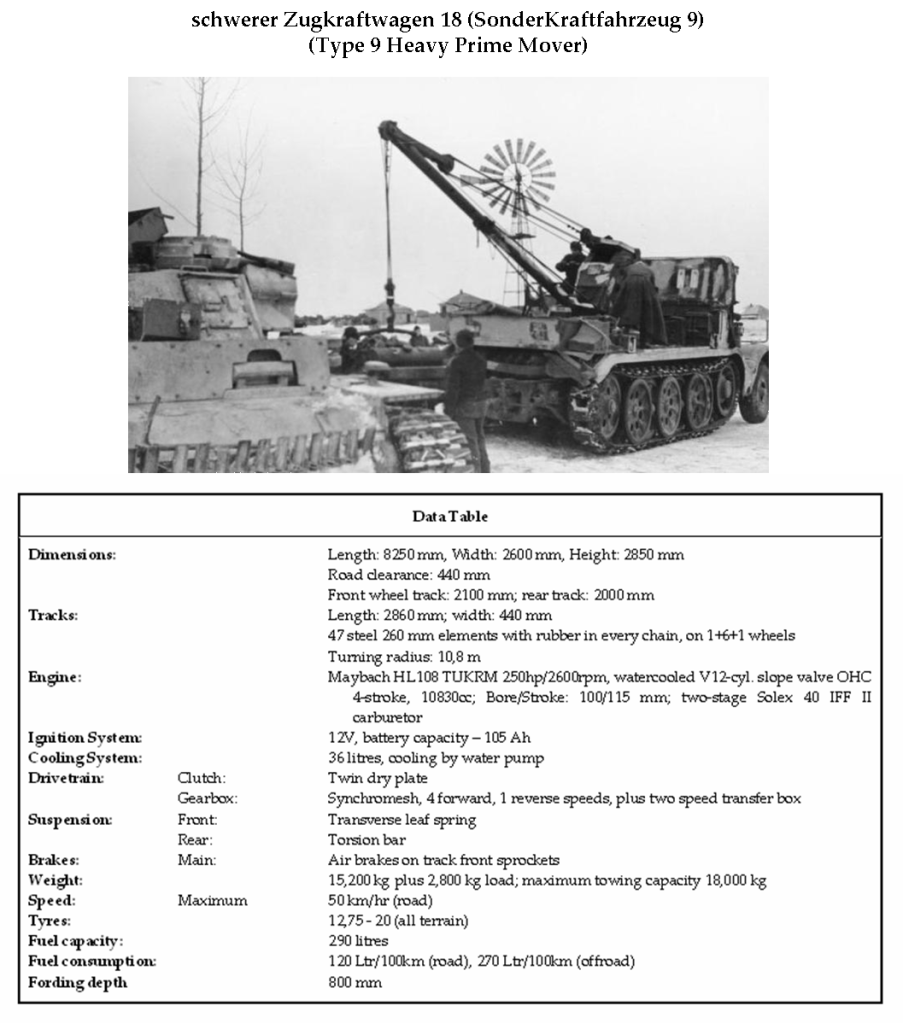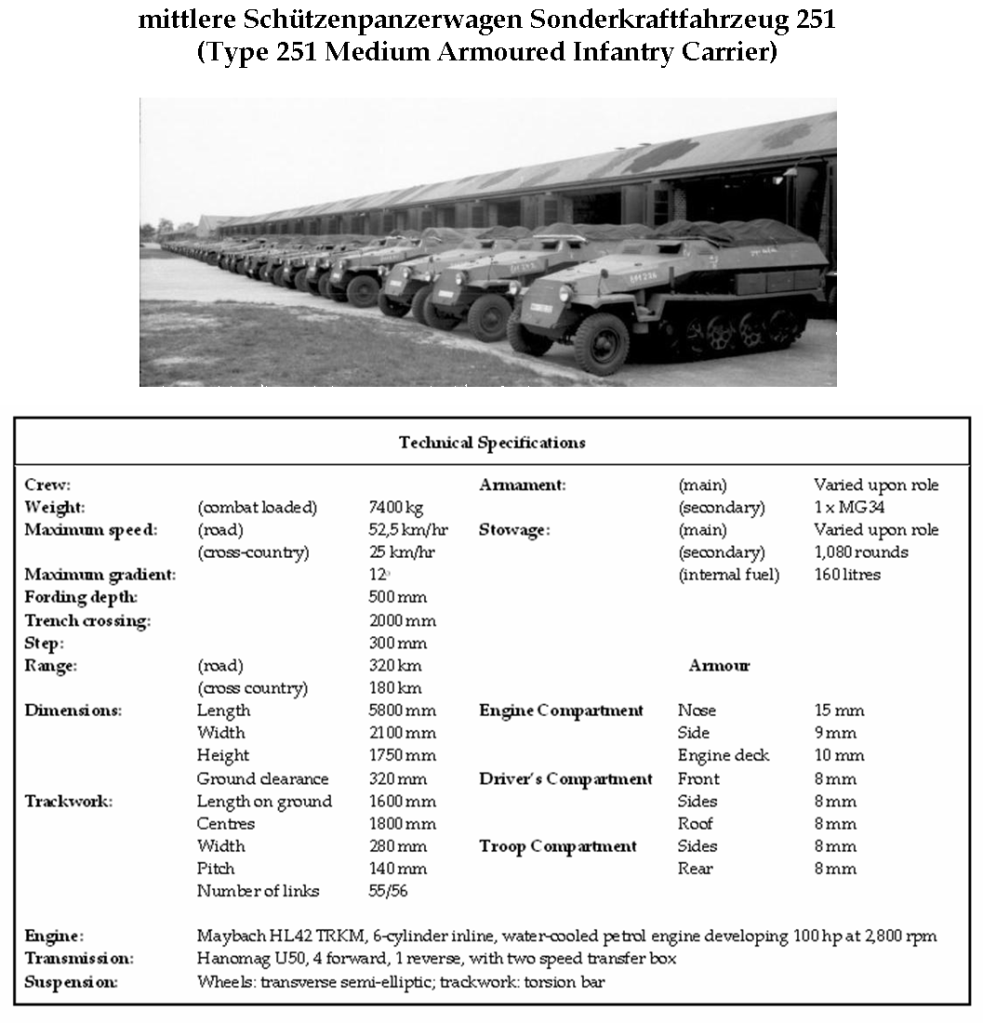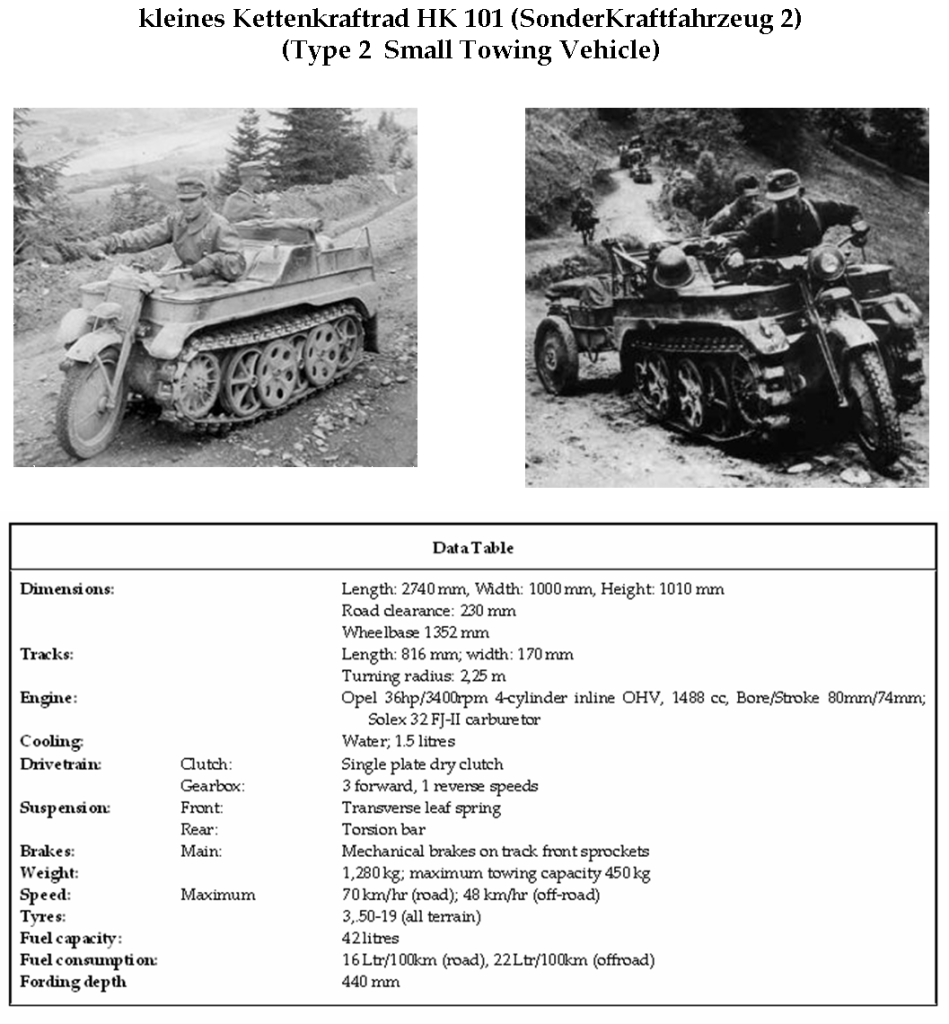(Type 10 Light Prime Mover)
Preliminary design of the Type 10 Light Prime Mover, like all Heer halftrack vehicles was undertaken by the Military Automotive Department under the direction of Engineer Ernst Kniepkamp. The firm Deutsche Maschinenbau AG, of Wetter, in the Ruhr, was tasked to develop and place in production what was known as the kleine geländegängiger Kettenschlepper – Small Cross-country Tracked Carrier, and a prototype appeared in 1934, to be followed by a small developmental batch for extended field trials. The design was standardised in 1936 and placed into production – first by Deutsche Maschinenbau, but eventually five firms were part of the production group, viz.
Deutsche Maschinenbau AG, Wetter
Adlerwerke AG, Frankfurt-am-Main
Büssing-NAG, Werk Berlin-Oberschöneweide
Mechanische Werke Cottbus GmbH, Cottbus
Österreichische Saurerwerke AG, Wien
The Heer employs the Type 10 Light Prime Mover in a variety of roles, with four principal configurations:
Special Motor Vehicle 10 (Sonder Kraftfahrzeug 10) – Prime mover with towing pintle
Special Motor Vehicle 10/1 (Sd. Kfz. 10/1) – Light chemical detection vehicle
Special Motor Vehicle 10/2 (Sd. Kfz. 10/2) – Light chemical decontamination unit
Special Motor Vehicle 10/3 (Sd. Kfz. 10/3) – Portee carrier for 2cm FlaK 30
By the close of December 1939 more than 2,200 vehicles of this type had been delivered to the Heer and production was continuing.
